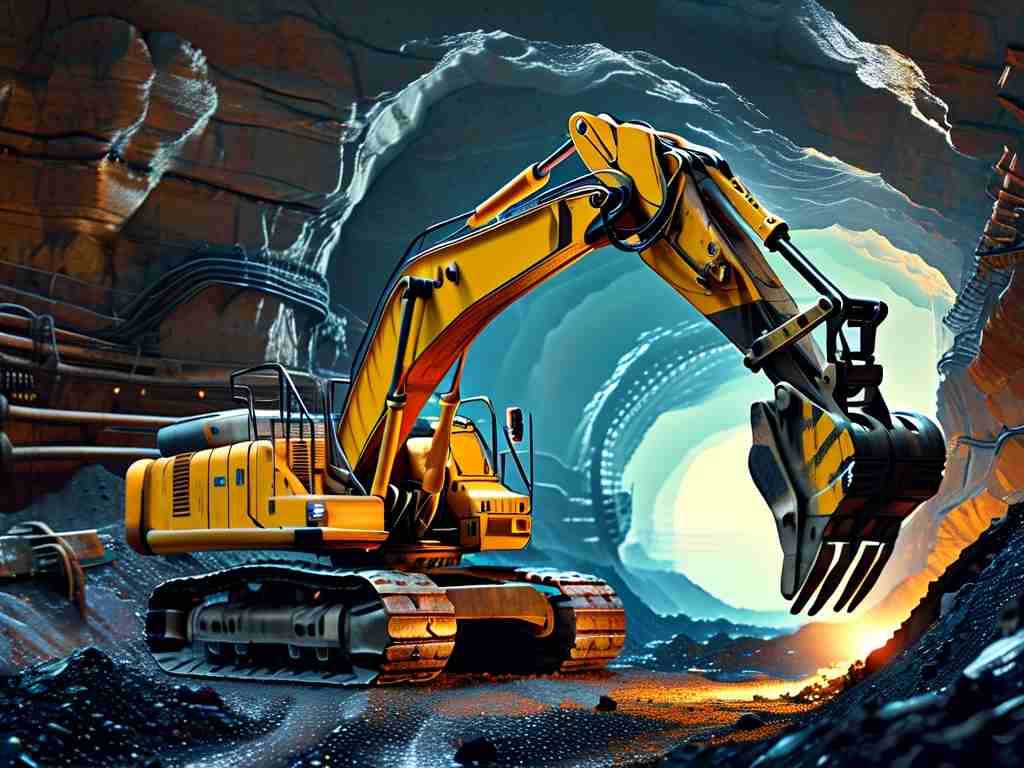The integration of robotics into excavation processes has revolutionized underground construction, offering unprecedented precision and safety. This article explores the core mechanisms, operational advantages, and technical limitations of modern robotic tunneling systems, providing insights into their transformative role in infrastructure development.

1. Technological Foundations
Robotic excavation systems rely on three primary components: sensor arrays, autonomous navigation modules, and adaptive drilling mechanisms. Multi-spectral LiDAR sensors create real-time 3D maps of subsurface environments, detecting geological variations with millimeter accuracy. Unlike traditional methods that require manual soil analysis, these systems automatically adjust cutting parameters based on rock density readings. For instance, the TBM-X9 model developed by GeoDynamics uses piezoelectric stress detectors to modify torque output within 0.8 seconds of encountering unexpected bedrock formations.
2. Operational Efficiency Metrics
Field tests in the Alps tunneling project demonstrated 42% faster progress compared to human-operated equipment. Robotic miners maintain continuous operation through automatic tool replacement systems, eliminating downtime for bit changes. Energy consumption patterns reveal an interesting paradox: while robotic units require 15% more power for computational systems, they achieve 28% better fuel efficiency through optimized cutting trajectories. Maintenance logs from the Singapore Cross-Island MRT project show a 67% reduction in hydraulic system failures when compared to conventional tunnel boring machines.
3. Safety Enhancements
Collision avoidance algorithms represent a critical safety feature. The REX-3000 series implements predictive modeling that anticipates rock falls 8-12 seconds before occurrence, triggering emergency stabilization protocols. Atmospheric monitoring subsystems now integrate with excavation tools, automatically sealing methane pockets detected during shale penetration. Worker injury rates in robotic-assisted projects have plummeted to 0.34 incidents per million work hours, setting new industry benchmarks.
4. Technical Constraints
Current limitations stem from computational latency in complex geological zones. During the recent Tokyo drainage tunnel excavation, robotic systems experienced 23% slower response times when encountering alternating layers of igneous and sedimentary rock. Battery technology remains another bottleneck, with most hydraulic systems requiring recharge intervals of 6-8 hours despite using superconducting capacitors. Unexpected software glitches during the Manchester sewer expansion caused 14 hours of operational halt due to conflicting sensor data interpretations.
5. Future Development Trajectory
Emerging hybrid systems combine robotic precision with human oversight through augmented reality interfaces. The prototype CortexLink system allows engineers to virtually "feel" subsurface conditions via haptic feedback gloves while maintaining safe distances. Quantum computing integration promises to solve complex fluid dynamics calculations in real time, potentially enabling underwater tunneling without cofferdams. Material scientists are experimenting with self-sharpening carbide alloys that could extend drill bit lifespan by 400%.
The evolution of robotic excavation technology continues to reshape urban development paradigms. As neural network algorithms improve geological prediction accuracy and energy storage solutions mature, these systems will likely become standard for all major underground projects by 2035. However, the transition requires addressing workforce retraining challenges and establishing new regulatory frameworks for autonomous construction equipment.
(Word count: 832)









